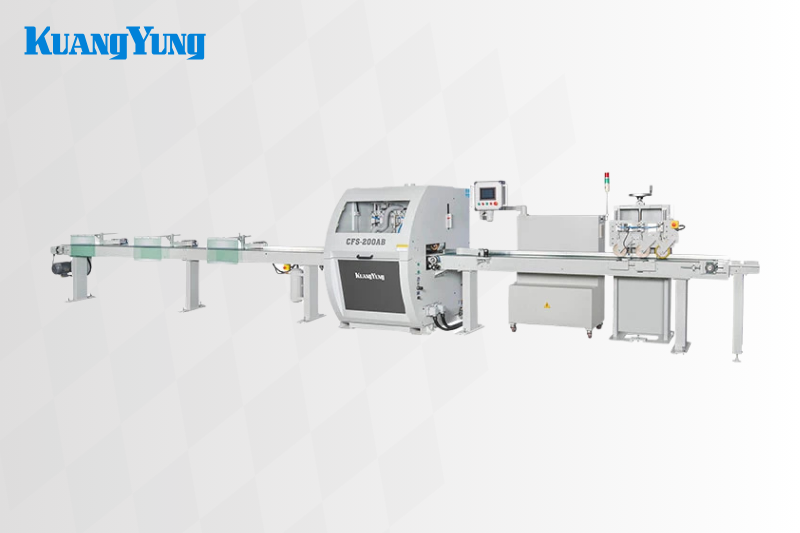Comprehensive Guide to Cross-Cut Saws: Enhance Your Carpentry Efficiency

In the B2B world, industries like manufacturing and construction rely heavily on precise, high-quality cutting tools to ensure efficient operations. One of the essential tools for these industries is the cross-cut saw, known for its ability to deliver accurate cuts and improve overall productivity. For industrial applications, cut off saws, cut off saw machines, and CNC wood cutting machines are critical assets that support businesses by enhancing precision and reducing material waste. Additionally, CNC wood cutting machines offer advanced automation, making them invaluable for large-scale operations.
Types and Features of Cross-Cut Saws for B2B Industries
Cut Off Saw Machines
A cut off saw is designed for heavy-duty, wood preparation use, providing clean, accurate cuts through a variety of wood. In constructional material, cut off saw machines play an essential role in achieving precise, clean cuts for beams, panels, and other structural components. These machines help businesses meet stringent requirements while reducing waste, making them a top choice for high-volume operations.
Optimizing Saws
Optimizing saws like the OptiCut utilize advanced software to determine the most efficient cutting patterns, saving materials and speeding up production processes. This feature is invaluable in industries such as furniture manufacturing, where precise measurements are crucial for reducing scrap and optimizing material use.
Woodworking CNC Machines
Woodworking CNC machines and CNC wood cutting machines provide automation and extreme precision, offering unmatched accuracy for large-scale production. These machines are perfect for complex and custom designs, making them indispensable in fields like cabinetry, architecture, and specialized furniture manufacturing.
Best Practices for Using Cross-Cut Saws
To maximize the performance of cross-cut saws and cut off saw machines, businesses should adhere to several best practices:
- Choose the right blade for the material at hand, as different materials require specific blade types.
- Secure the material properly to ensure accuracy and avoid mishaps during cutting.
- Perform regular maintenance on the saw to ensure smooth operation, extend its lifespan, and reduce downtime.
- Train operators to ensure they are knowledgeable in using and maintaining the machines, which minimizes errors and enhances productivity.
Cross-Cut Saw Advantages and Applications Across Different Industries
Constructional Materials
In the construction industry, cut off saws and cut off saw machines are frequently used to cut through structural materials with high precision. These tools allow for the mass cutting of beams and panels, ensuring that each piece meets exact specifications. Woodworking CNC machines are also utilized in this sector for intricate cuts and shaping of wood components, allowing for greater customization and enhanced project outcomes.
Furniture Manufacturing
In furniture production, optimizing saws like the OptiCut ensure minimal material waste while achieving precise cuts for pieces like table legs, chair backs, and cabinet frames. Cut off saws also play a critical role in cutting large materials down to size, ensuring that each component fits perfectly into the final product. The integration of Woodworking CNC machines in this sector provides additional flexibility, enabling the creation of custom designs and complex cuts that would be difficult with traditional methods.
Packaging Industries
For packaging applications, cut off saw machines deliver precision cuts on pallet materials, which are essential in exporting, freight delivery, and other shipment industries. Woodworking CNC machines can also be adapted for material preparation, giving businesses versatility in their operations and allowing them to handle multiple materials with a single machine setup.
Cross-Cut Saws Tailored for Diverse Production Needs
Cross-cut saws are crucial for efficient wood processing. These models cater to diverse production needs, optimizing performance and productivity in woodworking. Here is a selection of saws designed for specific cutting tasks.
Heavy Duty Type Semi-Optimizing Cut-Off Saw
Ideal for mass production of wood preparation and finger-jointed lumber, the Heavy Duty Type Semi-Optimizing Cut-Off Saw offers high productivity and material savings. Its robust design ensures precision cutting, making it perfect for processing long or heavy lumber efficiently.
High Production Economical Semi-Optimizing Cut-Off Saw
The High-Production Economical Semi-Optimizing Cut-off saw excels in lumber production and initial wood preparation. Ideal for finger jointing defective materials, it operates 3-5 times faster than manual saws while reducing wood waste by over 5%.
High Cost-Performance Ratio Full Optimized Cut-Off Saws
This Full Optimized Cut-Off Saw is ideal for finger-jointed lumber production, featuring a high-speed multiple axes controller. It includes a marking line and remainder merging function for optimal timber cutting, all operated via a user-friendly colored touch screen to minimize waste and maximize efficiency.
Conclusion: Maximizing Efficiency with Cross-Cut Saw Solutions
In industries such as packaging, manufacturing, and wood preparation, investing in advanced cutting tools like cross-cut saws, cut off saw machines can significantly improve efficiency, reduce waste, and increase overall productivity. These machines, including CNC wood cutting machines, are critical to achieving the high precision and operational efficiency that B2B companies require for long-term success.
If you're seeking reliable cutting solutions, Kuang Yung is a professional manufacturer of cross-cut saws, equipped to meet global market demands with extensive international project experience and ISO-9001 certification. To learn more, please contact us.